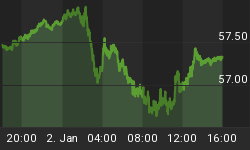Taiwan's central bank surprised the world on Thursday by cutting rates for the first time in five years and establishing a potential peak to its tightening cycle. The 12.5 basis point cut brings its benchmark discount rate to 3.5%, and comes after raising rates in the previous sixteen consecutive policy meetings since 2004 to quell inflationary pressures from rising oil and food prices. (Shaded area is recession in Taiwan.)
Chart 1
In the official statement, Taiwan's central bank explained, "As the risk of a slowing economy has risen and inflationary pressures are easing, we have decided to cut interest rates." Fortunately, the committee had both the CPI reading and industrial production (IP) levels from the month of August in making its decision.
A quick gander at the IP trend (see chart below) would certainly have us jumping aboard the cutting bus, keeping in mind that industry accounts for over one-quarter of the country's total economic activity. (Also please keep in mind that this manufacturing powerhouse produces 80% of the world's motherboards and 40% of the world's flat-panel displays. The latest reading for August export orders was not good, and part of the slowdown in IP is a direct result of the world economy demanding less of Taiwan's integral computer and electronic hardware. August export orders rose yoy at the slowest pace in more than five years, and fell for the first time in six years to Taiwan's largest export market - China.)
Chart 2
However, the August CPI reading is not so convincing. Consumer price inflation reached a 14-year high in July of 5.93% from a year earlier. August's reading of 4.78% is an obvious improvement but certainly nothing to write home about - and especially nothing to cut rates over. We would have expected the experts to wait for further inflation data to avoid the mistake of calling a false peak, especially given the resiliency of crude and food prices throughout this global slowdown.
















